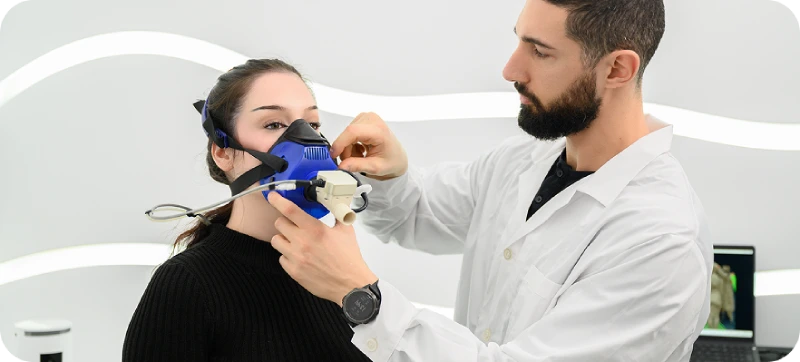PNOĒ YIELDS
RESULTS
From Measurement, to Meaningful Change.
In a two-month program with 100 participants, PNOĒ used clinical-grade testing to build precision nutrition, exercise, and longevity plans. On retest, participants improved across core cardiometabolic markers — stronger aerobic fitness, better breathing mechanics, and more fat-burning at rest — demonstrating that PNOĒ’s personalized approach is both accurate and effective.
Core Metrics We Optimize
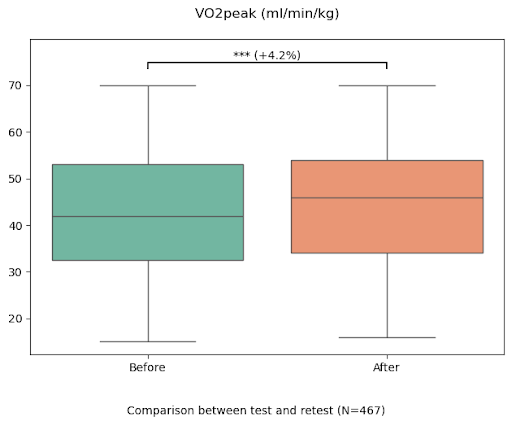
Core Metrics We Optimize
VO2peak ↑ 4.2% — fitter hearts, better endurance
A composite shift toward a “younger” cardiometabolic profile signals lower risk and higher capacity. Personalized mixes of aerobic work, recovery targets (sleep/stress), and nutrition timing moved the needles that feed biological-age models. You’re breathing, we’re personalizing it.
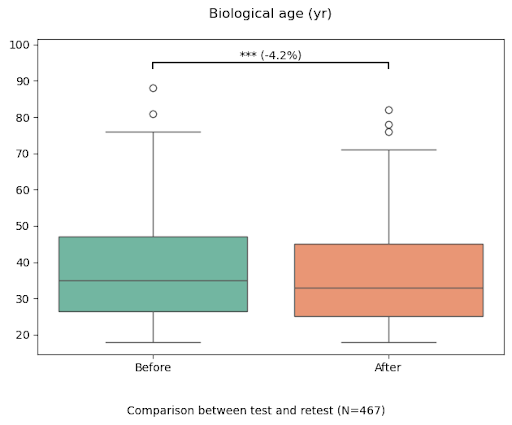
Core Metrics We Optimize
Biological Age ↓ 4.2% — younger physiology
A composite shift toward a “younger” cardiometabolic profile signals lower risk and higher capacity. Personalized mixes of aerobic work, recovery targets (sleep/stress), and nutrition timing moved the needles that feed biological-age models. You’re breathing, we’re personalizing it.
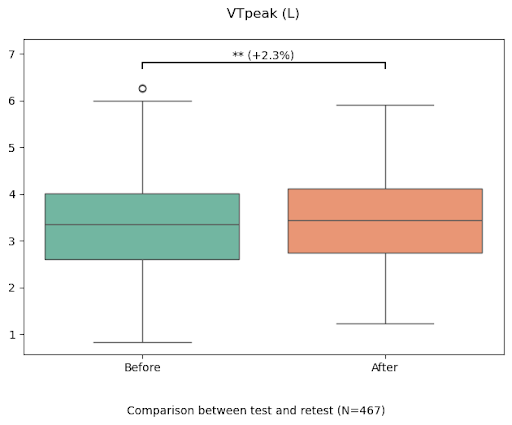
Core Metrics We Optimize
Peak Tidal Volume ↑ 2.3% — stronger, more efficient breathing
Bigger, more effective breaths at peak effort reflect improved ventilatory mechanics and respiratory-muscle strength. Individualized breathwork and cadence cues during training, training in the right zones, plus respiratory-muscle drills, powered this gain.
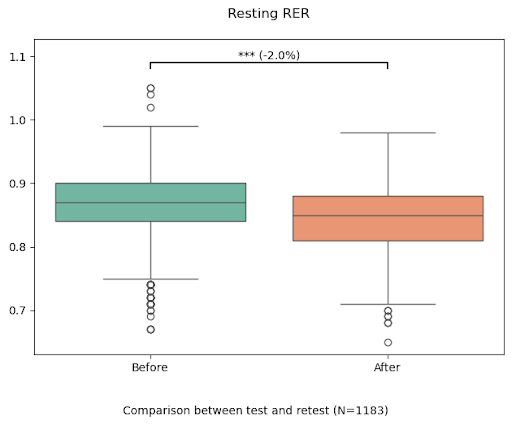
Core Metrics We Optimize
Resting RER ↓ 2.0% —
more fat used at rest
A lower respiratory exchange ratio indicates better metabolic flexibility and greater fat oxidation in everyday life. Macro planning and fueling windows were tailored to each metabolism, reinforced by PNOĒ’s zone-2 conditioning.
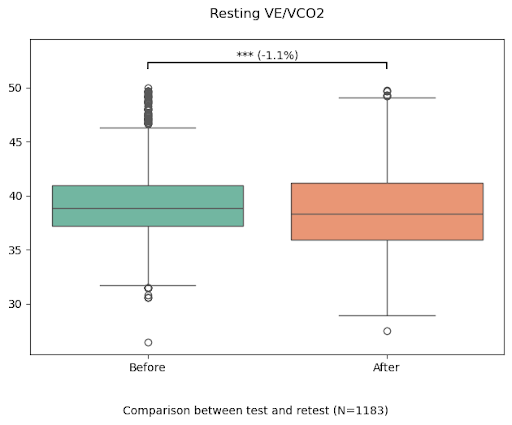
Core Metrics We Optimize
Resting VE/VCO2 ↓ 1.1% — easier gas exchange
Less breathing needed per unit of CO2 suggests more economical ventilation. Technique cues (nasal/diaphragmatic emphasis) and individualized aerobic intensities improved ventilatory efficiency.
Why These Metrics Matter
- Predict longevity and performance with clinical precision.
- Turn breath-by-breath data into personalized training, nutrition, and recovery plans.
- Re-test to prove measurable change clients can feel and you can show.
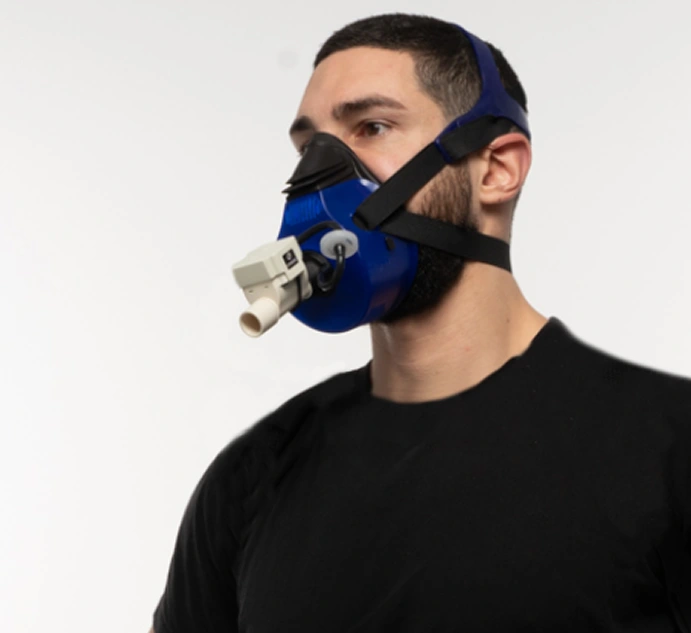
At a glance:
- VO2peak ↑ → stronger aerobic engine.
- Biological age ↓ → “younger” physiology.
- VT Peak ↑ → deeper, more efficient breaths at max effort.
- Resting RER ↓ → greater fat oxidation at rest.
- Resting VE/VCO2 ↓ → more economical breathing.

How PNOĒ Testing Works
(and Turns Data into Action)
Measure
(10–15 min, clinical‑grade): Resting and active breath analysis across 23 cardiometabolic biomarkers.
Interpret
Clear visuals + explanations for VO2peak, biological age, VT Peak, RER, VE/VCO2, and more.
Act
Personalized training zones, nutrition guidance and longevity plans matched to your biology.
Prove
Re‑test to document objective improvements clients can see and share.
Validated Across Technologies
Our methodology doesn’t stand alone - it’s been validated against leading devices and independent protocols, ensuring accuracy and reliability across the board.
Proof in Action (Before–After)
PNOĒ testing doesn’t just explain physiology; it proves measurable change.
Using our clinically validated breath analyzer, targeted interventions have shown immediate and measurable improvements across VO2peak, fat oxidation, metabolic flexibility, and ventilatory
NanoVi (20-minute session, n=10)
- What changed (PNOĒ measured): VO2max +7.8%, Resting RER −11% (greater fat oxidation), Crossover +5.9%; positive trends in RMR +7.8% and Max Tidal Volume +6.2%.
- Why it matters: Bigger aerobic engine, better fat use at rest, and improved metabolic flexibility.
- PNOĒ’s role: Clinical-grade indirect calorimetry and standardized protocols turned therapy gains into objective, clinically interpretable metrics.
Avere-TRIM (single dose, 2-hr re-test, n=12)
- What changed (PNOĒ measured): RER 0.81→0.79 (−2.4%), Crossover HR 118→131 bpm (+11.7%), Fat-Max HR +1.8%, RMR +0.7%.
- Why it matters: Immediate shift toward fat oxidation and metabolic efficiency, supporting smarter fueling and weight-management strategies.
- PNOĒ’s role: High-resolution biomarker capture quantified the supplement’s effect and translated it into actionable performance and nutrition guidance.
PULSE PEMF (10-minute session, n=17)
- What changed (PNOĒ measured): VO2max +8.1%, RMR +4%, Resting RER −4% (better fat oxidation), Crossover HR +7.3%.
- Why it matters: Boosted aerobic capacity, metabolic flexibility, and more efficient energy use at rest.
- PNOĒ’s role: Comprehensive, validated assessment made PEMF’s effects quantifiable and program-ready for practitioners and clients.
FAQs
How often should I re-test cardiometabolic metrics?
Every 6–12 weeks to quantify adaptations in VO2peak, ventilatory efficiency (VE/VCO2), fuel utilization (RER), and breathing mechanics (VT Peak).
Are these tests suitable for beginners and clinical populations?
How does imporving VO2peak impact longevity?
Whats the link between Resting RER and weight management?
How do VT Peak and VE/VCO2 help people with breathing issues or athletes?
Which industries/verticals benefit most from these metrics?
- Endurance & sports performance: VO2peak, VT Peak, VE/VCO2 for race‑day economy.
- Weight‑loss & metabolic clinics: Resting RER for fat‑oxidation profiling and nutrition periodization.
- Pulmonary rehab & respiratory therapy: VT Peak, VE/VCO2 for breathing mechanics and ventilatory control.
- Corporate wellness & longevity programs: Biological age as an integrative KPI for healthspan.

